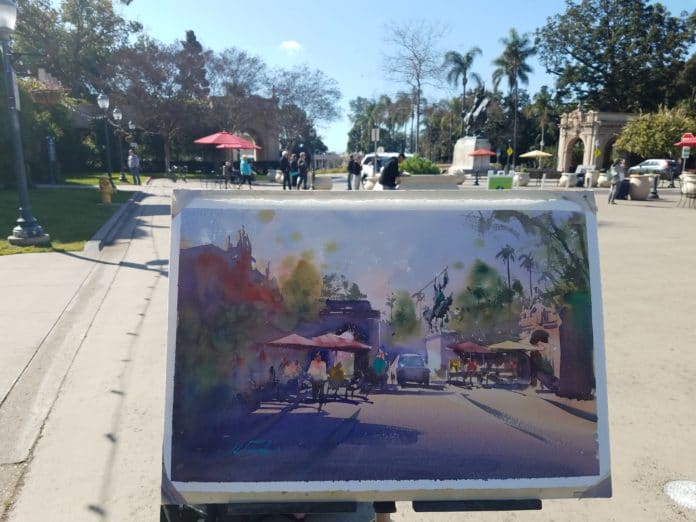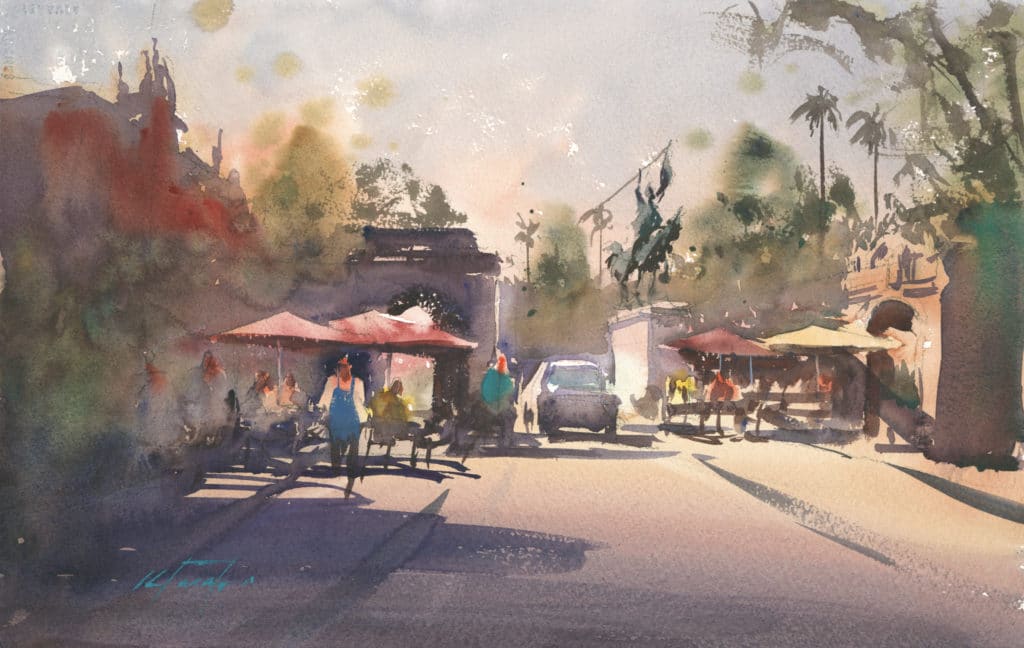
“We all recognize the importance of editing, but that is just one of many ways to deal with simplification,” says Keiko Tanabe. “Other than deciding what to leave in and what to leave out, what else can we do?”
By Keiko Tanabe
How does one simplify a complex scene in a painting? My approach to this question starts with having a vision. I want to have a solid idea about what I want to communicate and what I want to achieve in a painting before I begin. I use this as a guide to make some of the important creative decisions including simplification. Whether your decision to simplify is planned or spontaneous, I believe it should follow your initial vision. This way the decisions can work consistently to create a more cohesive image at the end.
Some may think that simplifying means eliminating details. We all recognize the importance of editing, but that is just one of many ways to deal with simplification. Other than deciding what to leave in and what to leave out, what else can we do?

Let’s look at a painting I did at Balboa Park in San Diego as an example. I was at the main plaza of this popular park. Always crowded with visitors, this place offers a variety of views that include Spanish-Colonial-style buildings, fountains, statues, trees, potted plants, vendors, umbrellas of outdoor cafes, cars, trams, etc. I especially liked the morning light illuminating the scene, but I only had a short time to capture it. I needed to interpret the scene quickly to understand which elements to keep and which to eliminate or change, as it would be overwhelming to incorporate everything in the painting.
First I chose to crop the entire scene and focus on a view of one statue and the hustle and bustle near it. Then I decided to eliminate the objects that were not integral to the story I wished to tell, such as potted plants and street lights. Using a big brush, I laid down the first wash.
Because I made my brushstrokes as big as possible and kept the number of strokes minimal, it was done in minutes. After the first wash, I added the darks, again using minimal brushstrokes.
By squinting to identify light and dark areas, I tried to keep the value structure in the scene as simple as possible. I was also able to eliminate some of the small, unnecessary details this way.
Using a limited palette, I dropped paint onto the wet paper to create abstracted trees, and kept things simple by only including one car. In order to keep the impression of a busy scene without creating too much complexity, I painted a few of the figures realistically, and suggested the rest.
Because of my limited palette, I was able to create a simplified yet harmonious color scheme in the painting. I finished this painting in 40 minutes, needing only a simple idea and a few materials (3 brushes, less than 10 colors, and paper). Ultimately, all the decisions I made while simplifying this view were influenced by the vision I had at the beginning.
There are many ways to deal with complexity, and there is no formulaic answer to the question of how to simplify it. We can simplify design elements, composition, brushwork, subject, materials, and even the idea or concept we start a painting with. The important thing is that all of the decisions to simplify support the artist’s vision. As long as it works, we can attempt anything in order to simplify the scene.
Learn how to paint with watercolor! Sign up here to pre-order Keiko Tanabe’s upcoming watercolor workshop on DVD or digital download.
In this PleinAir Podcast with Eric Rhoads, Keiko Tanabe tells us one of the best things she did early in her career to help her path to success, what it was like to quit her “day job” and become a full-time artist, and much more.
Preview “Storytelling with Watercolor with Keiko Tanabe” here:



